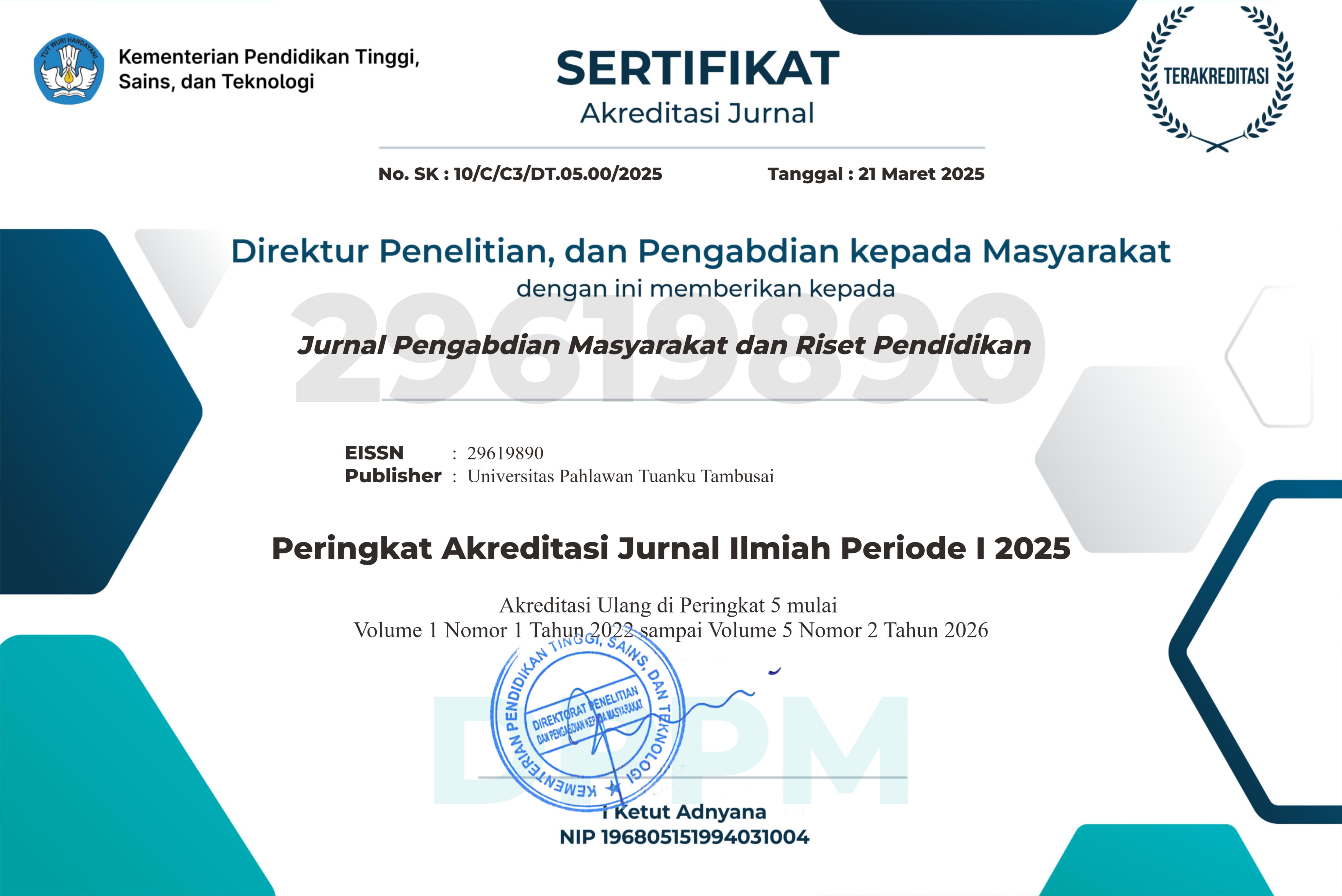Empowering Education: Integrating Canva as an Innovative Instructional Media in Community Schools
DOI:
https://doi.org/10.31004/jerkin.v2i3.243Keywords:
Community service, Canva, Instructional MediaAbstract
This community activity aims to strengthen the awareness and skills of SD Negeri 1 Peunaron teachers regarding the use of Canva as a learning medium. Through a series of activities, including familiarization sessions, hands-on demonstrations, and group practice sessions, teachers are given in-depth instruction on how to integrate Canva into everyday learning. The results of this service include the creation of more creative and interesting learning materials, as well as the formation of a mutually supportive learning community between teachers. Even though obstacles related to technology accessibility still exist, the successful implementation of Canva at SD Negeri 1 Peunaron provides motivation for continued initiatives. This success not only represents a revolution in teaching practice, but also marks the first step towards more innovative learning in rural settings. In this way, this service will not only have an impact at the local level at SD Negeri 1 Peunaron, but can also become a model for other schools in utilizing technology to improve the quality of learning. This success provides a framework for further investigating the potential of technology in rural education, creating a wave of innovation that could change the learning paradigm in schools across the region.
References
Mon, L. (2010). Communication and Education in a Virtual World: Avatar-Mediated Teaching and Learning in Second Life. Int. J. Virtual Pers. Learn. Environ., 1(2), 1–15. https://doi.org/10.4018/JVPLE.2010040101
Norman, E., & Furnes, B. (2016). The relationship between metacognitive experiences and learning: Is there a difference between digital and non-digital study media? Computers in Human Behavior, 54, 301–309. https://doi.org/10.1016/j.chb.2015.07.043
Prayuda, M. S., Juliana, J., Ambarwati, N. F., Ginting, F. Y. A., & Gultom, C. R. (2023). Students’ Writing Error in Parts of Speech: A Case Study of EFL Students. Jurnal Educatio FKIP UNMA, 9(2), 659–665. https://doi.org/10.31949/EDUCATIO.V9I2.4419
Prayuda, M. S., Silalahi, T. S. M., & Almanda, F. Y. (2022). TRANSLATION OF THEMATIC STRUCTURE OF DESCRIPTIVE TEXT FROM INDONESIAN INTO ENGLISH. Pendidikan Bahasa Indonesia Dan Sastra (Pendistra), 148–151. http://ejournal.ust.ac.id/index.php/PENDISTRA/article/view/2365
Zhang, W. (2021). The Efficacy of Computer-Mediated Feedback in Improving L2 Speaking: A Systematic Review. Theory and Practice in Language Studies, 11(12), 1590–1601. https://doi.org/10.17507/TPLS.1112.11
Downloads
Published
How to Cite
Issue
Section
License
Copyright (c) 2024 Dasiyem, Ester Julinda Simarmata, Rosdiana Samosir

This work is licensed under a Creative Commons Attribution-ShareAlike 4.0 International License.















